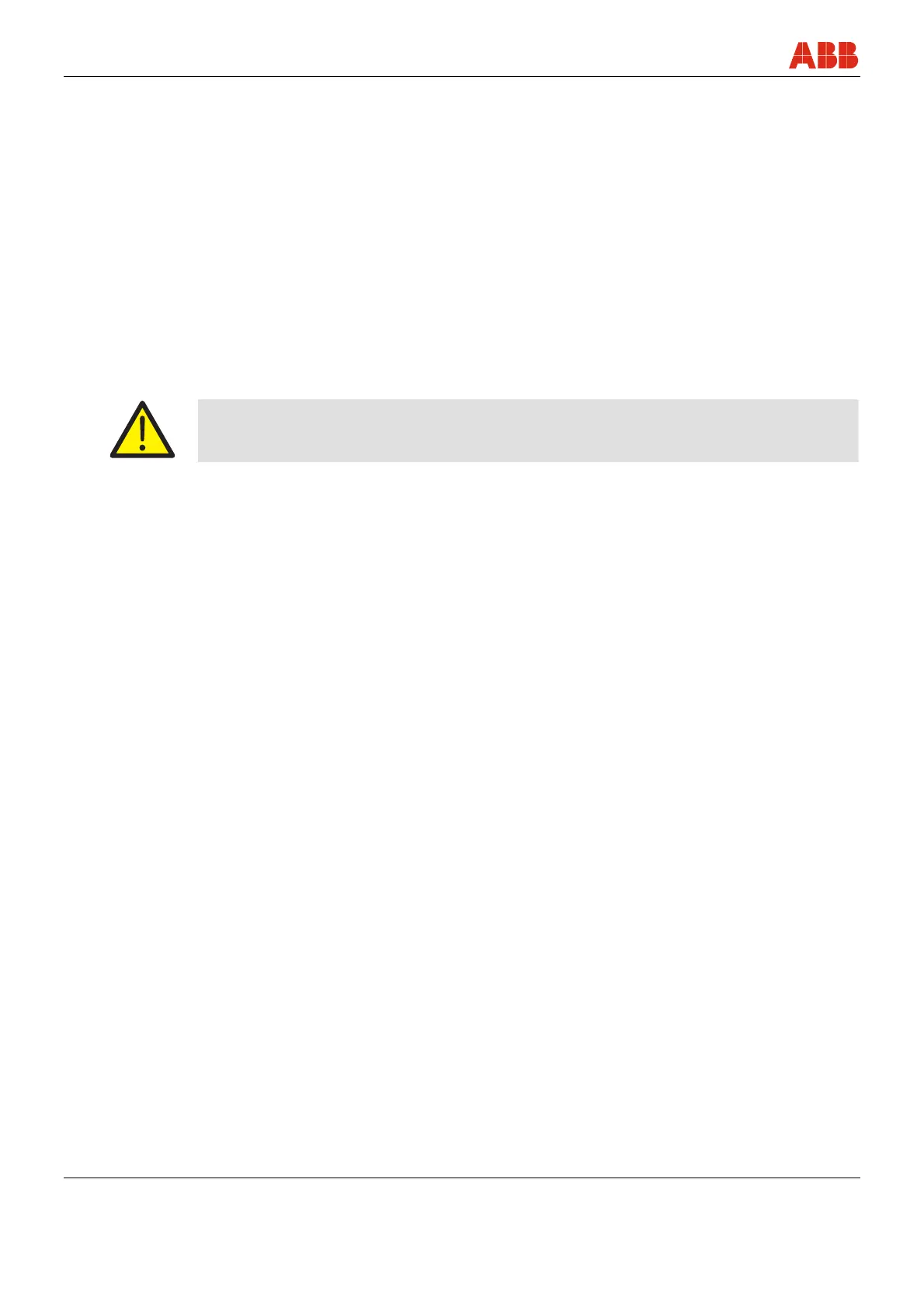Operation
28 RHD250 ... 4000 42/68-165-EN
Pos: 12.1 /Überschri ften/1/A - C/Betri eb @ 10\mod_1175678278921_3101. doc @ 76015
5 Operation
Pos: 12.2 /Überschri ften/1.1/1-spa ltig/A - C/Automatik / Handb etrieb @ 10\mod_118171557 0281_3101.doc @ 104973
5.1 Automatic / manual mode
Pos: 12.3 /Bedienung/Ak torik/Antri ebe/Schwenkantriebe/A llgemein/Automatik / Handbetrieb @ 10\mod_1 181715898015_3101.doc @ 105066
The motor triggered by the power electronics controls the drive shaft via oil-lubricated spur
gears. This transmits the torque to the valve via a lever with ball-and-socket joints and a
coupling rod. A position sensor detects backlash-free the current position of the drive shaft.
Adjustable limit stops prevent overloading of the valve in the event of an operating error. The
motor brake locks the actuator in the current position if the power suplly is cut off.
Pos: 12.4 /Überschri ften/1.1/1-spa ltig/G - I/Handradbetri eb @ 10\mod_1181715640046_ 3101.doc @ 104996
5.2 Manual operation
Pos: 12.5 /Bedienung/Ak torik/Antri ebe/Schwenkantriebe/A llgemein/Handrad betrieb RHD @ 16\mod_11972 75207406_3101.doc @ 145182
Manual mode allows you to move the actuator manually when the electrical power is off.
Warning - risk of injury!
Note that the actuator position may be changed accidentally by the repelling power of the
valve when the brake is released!
1. Press the hand wheel lock.
2. Turn the handwheel to move the part-turn actuator to the desired position.
3. Release the lock.
Pos: 13 /======= Seitenumbruch ======== @ 0\mod_112 6532365768_3101.doc @ 3830

